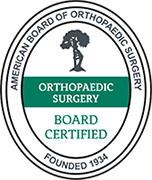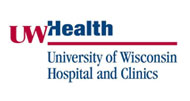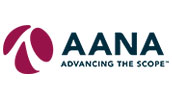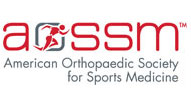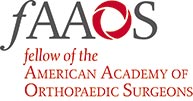Knee Post-operative Instructions
Pain Medications:
A prescription for pain medication (usually a mild-moderate narcotic) will be sent to your pharmacy or provided to you day of surgery, usually along with an NSAID. Per practice policy, narcotic refills are not allowed to be given over the phone on weekends or after office hours.
Nausea/Vomiting:
Sometimes after surgery, patients have nausea or vomiting. A medicine has been prescribed for this. If you do not have nausea or vomiting, you do not need to have this prescription filled.
Diet and Comfort:
Return to your regular diet as tolerated. Begin with light or bland foods. Drink plenty of fluids.
Home Medications:
Resume medications you were taking prior to surgery unless you have been told to discontinue them. If you smoke (or have smoked within the last year), we strongly recommend that you do not smoke.
Activity:
The nurses in the recovery room will advise you on your specific weight-bearing status. These guidelines should be strictly followed to in order to appropriately protect the surgical site. Typically, a set of crutches or a walker will be dispensed to accommodate these restrictions and improve your mobility, which is important in preventing complications, such as a blood clot. The nursing staff will ensure that you are safe to go home with the appropriate instructions on ambulation and crutch/walker use.
If you decide to rent or purchase a knee scooter/knee walker, then you should plan ahead for this. We can provide you with a prescription for this device, which may help with insurance coverage. Please make these requests prior to your surgery day so that you are prepared.
Elevation of your foot/ankle on multiple pillows when sitting or lying down is crucial to limit postoperative swelling, especially during the first 48 hours following surgery, and through at least the first week. Your foot should at least be at the level of your heart.
Blood Clot Prevention:
- If you smoke, stop smoking! Smoking makes blood clot formation more likely, impedes bone and soft tissue healing, and increases your infection risk.
- Keep your leg elevated at least to the level of your heart for the first 48
- Try to change position every 2 hours or so.
- Do not cross
- Work on range of motion exercises every 30 minutes while awake, including at the hip and knee (above where your surgery was).
- If you are riding in a car for a prolonged period, take a break every hour to get out and move around (with use of crutches/walker as directed).
- Report any of the following signs/symptoms to our office:
- Pain, redness, or swelling in the leg/calf
- Sharp, stabbing pain in your side, back, or chest
- Shortness of breath
- Fever > 101.4 F or chills/sweats
- Bloody mucus with cough
- Severe headache
- If ok by your primary care doctor, we generally advise taking an enteric-coated aspirin 325 mg daily during the first 2 weeks following surgery or until you are mobilizing appropriately. Dr. Akoh will discuss this individually with each patient in regards to exact dosage recommended. If you were already taking blood thinners (anti-platelet or anti-coagulant) before surgery, then these medications will be restarted when appropriate post-operatively. If you have a history of prior blood clot or significant risk factors, then Dr. Akoh may decide to prescribe Lovenox or other agent for
Ice:
Ice, similar to elevation, helps to control post-op swelling and reduce pain. Frozen bags of peas, commercially- available cold packs, or ice placed into an air-sealed bag are effective ways to cool your foot/ankle. A regimen of 2 hours on and 2 hours off during the daytime is effective and should be used during the first 48 - 72 hours after surgery. If you have a splint in place, it can be difficult to ice through this, but you may try to place the ice behind your knee, which can be quite effective to cool your ankle/foot.
Dressing Care:
Most dressings are not changed until your first post-operative visit. If we want you to change the dressing at home, specific instructions and supplies will be provided by our nurses in the recovery area or before your discharge home. All dressings should be kept clean and dry. If for any reason your dressing becomes wet or excessively bloody or feel that it is too tight, please contact our office to discuss and we can get you into clinic sooner for a new dressing if
needed. Along those lines, if you feel that a dressing is too tight, it is ok to gently loosen it at either end (at toes or ankle) to relieve a sore spot. Please call if any questions.
Post-Op Shoe:
Depending on your specific type of surgery (typically bunions and toe surgeries), a hard-soled shoe may be provided to you in the recovery area to help protect your foot. This is particularly important for you to wear when you are up and on your feet. Specific weight-bearing instructions with the shoe will be given. The post-op shoe does not need to be worn in bed or while resting.
Post-op Splint:
A well-padded dressing with plaster reinforcement may be applied to your leg/foot at the conclusion of your surgery. This splint helps to protect your foot/ankle and control swelling. DO NOT BEAR WEIGHT ON YOUR SPLINT! It is NOT meant to be removed and needs to remain clean and dry (it is NOT waterproof). Do not attempt to scratch your skin underneath the splint. If it feels too tight, elevation will help to decrease swelling and improve your comfort. If the splint becomes wet or feels excessively tight despite elevation, please contact our office and it can be evaluated/changed.
Pins:
Pins may be used in certain cases, especially toe surgery, to hold your toes in the appropriate position during the healing process. You may see "pin balls" on the ends of the pins. These protect the pin ends from catching on clothing, carpet, or other objects. It is not unusual for the pins to "back out" or protrude beyond their original position. If this happens, it is not an emergency. Do not push the pins back in. Call our office during business hours to make us aware and we can advise you further.
Discoloration:
It is common for the toes to swell after surgery and turn a bluish color, especially if the foot is in a dependent position (below the heart). If the toes turn dark blue, dark black, or completely white, please communicate this to our office immediately.
Infection:
Infection is uncommon, especially during the first week after surgery. A low-grade fever (temperature < 101.4 F) is very common following surgery and is not a sign of infection. Infection is typically characterized by streaking redness up the leg, a foul smell from the operative area, excessive drainage, and high fevers (> 101.4 F). If any of these events occur, please contact our office immediately.
Swelling:
Post-operative swelling to the leg/ankle/foot is common and expected for up to 6 - 12 months. This is mostly related to the effects of gravity/dependency on the limb. Once you are out of your post-operative splints/casts/dressings, you should use a compression hose/stocking/sock (knee high) to limit swelling and pain. These can be found at local pharmacies, medical supply stores, and online. Jobst is a common brand of compression
stockings. Typically, around 15-20 mmHg is good compression.
Driving After Surgery:
The ability for someone to resume driving after surgery is seldom a medical question, but usually a legal question. It is the responsibility of all licensed drivers to drive safely at all times, no matter what their permanent or temporary impairment may be. Reaction time following surgery may be compromised, secondary to medication and/or pain.
The ability to fully use all extremities may be impaired after surgery, especially if surgery involved your right foot/ankle.
Follow-Up Instructions:
- Follow up in clinic with your surgeon as scheduled. If your appointment has not already been made at the time of discharge, you will need to call to make the appointment in 10-14
- The general scheduling number is .
- Contact your physician's office during office hours or the Rush Copley operator at all other times (follow the prompts to the emergency line). The orthopedic staff on-call can be reached through this method if a medical emergency arises.
When to Call the Office?
Do not hesitate to contact our office if any concerns arise. We make every effort to return phone calls in a timely manner. During normal business hours please call the office at (option 3, then option 1). If after hours, please use the same number, but your call will be routed to one of the physicians on call for our group.
Important Contact Information
Starlyn Nadeau, RN, BSN (option 3, then option 1) Fax Number: 630-862-3085
After Hours: (follow the prompts to the emergency line)

